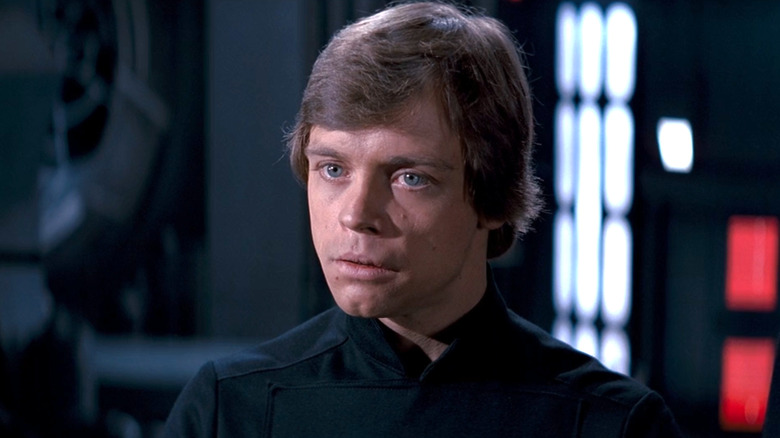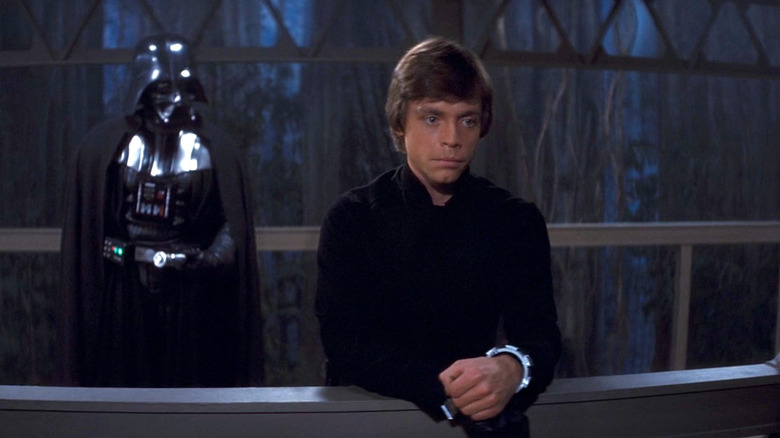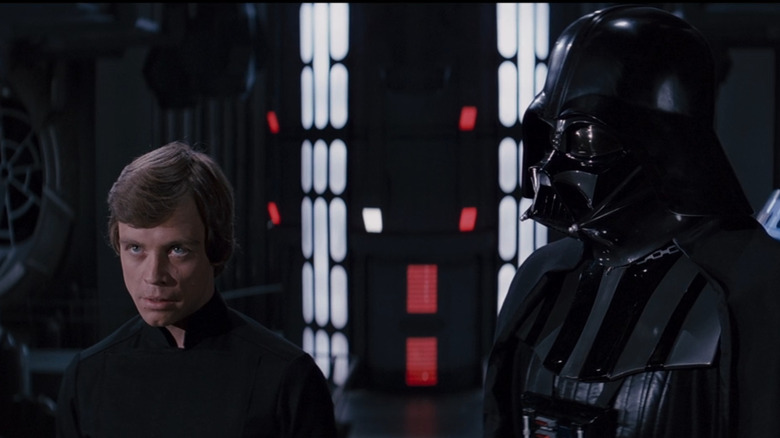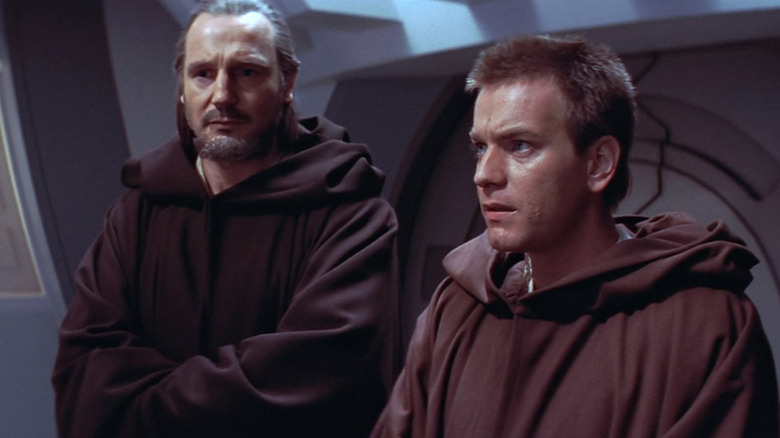Star Wars: Luke's Black Robes Were Deceptive - And Teased A 'Darker' Jedi Past
In the "Star Wars" universe, clothing is essential. A sharply styled uniform reflects the rigid mindset of an Imperial officer, while threadbare robes tell the story of a hard-bitten Tatooine moisture farmer. The sinister Sith dress in black cloaks, while the heroic Jedi dress in brown robes that call to mind the habit of an ascetic monk.
But observant "Star Wars" fans will notice that last statement is slightly inaccurate. Once he becomes a Jedi in "Star Wars: Episode VI – Return of the Jedi," Luke Skywalker (Mark Hamill) wears pitch-black robes, making him visually out of step with other Jedi in the franchise. That's because Luke's costume was meant to deceive viewers by obscuring information and suggesting things that would turn out to be red herrings.
Firstly, Luke's black robes were meant to suggest hints of the dark side of the Force. Additionally, the obsidian outfit was featured heavily in promotional materials, leading some fans to theorize that he was going to team up with Darth Vader (James Earl Jones). Finally, George Lucas and his team didn't have the specifics of Jedi fashion all worked out back in the 1980s; having initially intended for all Jedi to wear dark robes, Lucas was convinced to make them lighter during the development of "Star Wars: Episode I – The Phantom Menace."
Luke's clothes signify a darker calling
One thing Luke's robes aren't lying about is his emotional state. Being a Skywalker, Luke is extremely powerful in the Force. But the more Force-sensitive a person is, the more appealing the dark side becomes. Like his father before him, Luke has the potential to be tempted by the enhanced powers and abilities the dark side can provide. Caught between light and dark, Luke's black garb indicates his potential to be swayed by his father and the Emperor.
This look heightened suspense for fans. After all, in "Star Wars: Episode V – The Empire Strikes Back," they had seen Luke's Force vision on Dagobah, in which he saw his own lopped-off head clad in Vader's helmet. There was no reason to believe that vision would not come to pass in a very literal way.
The black robes may also have been a holdover from earlier versions of "Return of the Jedi." Initial scripts had a very different ending, with Luke killing Vader and, in doing so, completing his turn to the dark side. Luke would then don the helmet and declare himself the new Darth Vader. This, as we all know, ended up being rewritten, which is good, because it was a very dumb idea.
Luke's black robes hinted at a Vader team-up
Prior to the release of "Return of the Jedi," promotional photos showed Luke dressed in his black robes, walking alongside Darth Vader. After the bombshell "The Empire Strikes" twist that revealed Vader was Luke's father, fans were meant to assume that the two Skywalkers were teaming up for the final entry in the trilogy. But the photos were a clever bit of misdirection. They were taken from the scenes when Vader captures Luke and brings him before Emperor Palpatine on the Death Star. But the stills were cropped to remove the handcuffs around Luke's wrists.
By all accounts, the misdirection worked. As fans relentlessly theorized why and how Luke would end up by Vader's side, their obsession drove hype for the movie to a fever pitch. When "Return of the Jedi" opened in theaters, it hauled back $23 million over the weekend. Compare that to "The Empire Strikes Back," which pulled in shy of $5 million on its first weekend, and it's clear that the promotional strategies worked.
Luke's costume was designed before George Lucas figured out the Jedi
Since the prequel era of "Star Wars," beginning with 1999's "The Phantom Menace," fans have been given plenty of opportunities to see the fabled Jedi at the peak of their powers. But while locations like the Jedi Temple on Coruscant are now common knowledge among "Star Wars" aficionados, that wasn't always the case. Jedi were rarely depicted in the original trilogy, and those who did appear, Obi-Wan (Alec Guinness) and Yoda (Frank Oz), were hermits living on the edge of society to escape Imperial detection.
But as the mythology of the Jedi deepened in the prequels, fans came to know a lot more about them. They lived on a city-planet called Coruscant and operated out of the Jedi Temple, itself governed by a monkish hierarchy in which the most dedicated and powerful members rose up the Jedi ranks from Padawan to Master and were overseen by a high council. But while Lucas had a general concept of who the Jedi were while making the original trilogy, he had to set their culture in stone for the prequel films.
Early concept art for Jedi in "The Phantom Menace" showed them wearing black robes that took clear inspiration from Japanese samurai. But things changed over the course of production, and the brown robes we actually see in the movie set the tone for how Jedi would look going forward while helping them stand out as visually distinct from the dark colors of Sith and the Empire.



